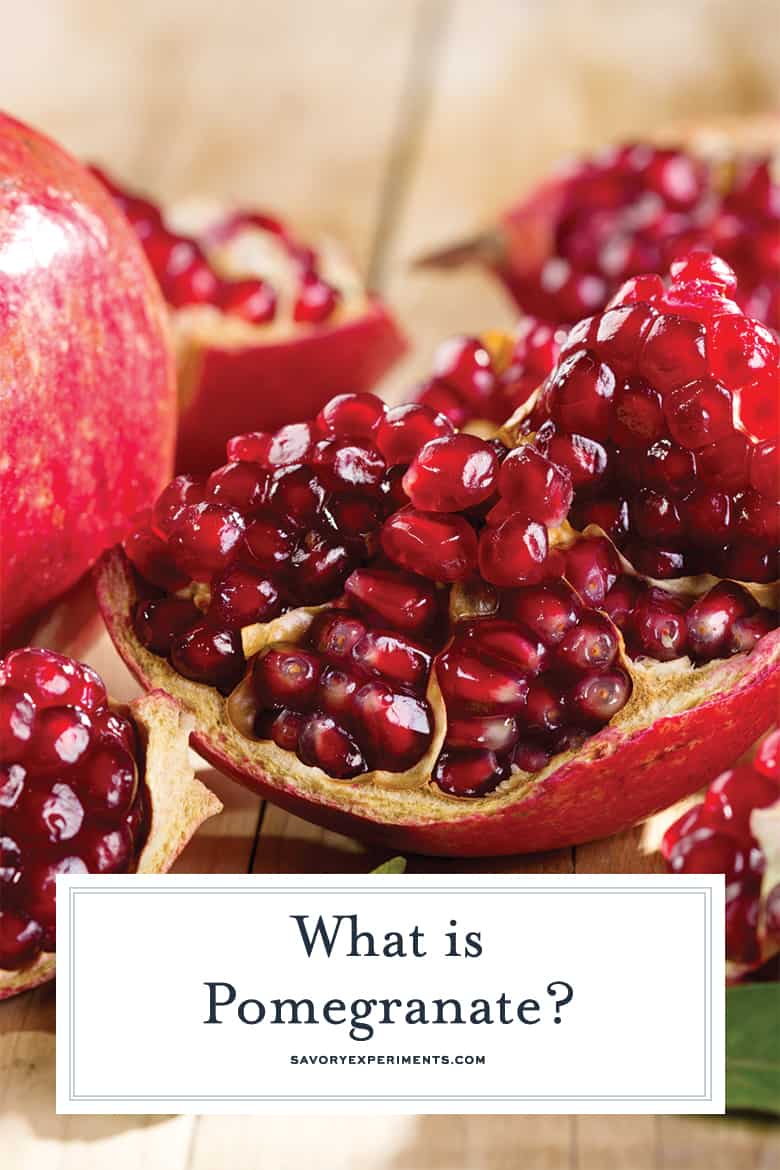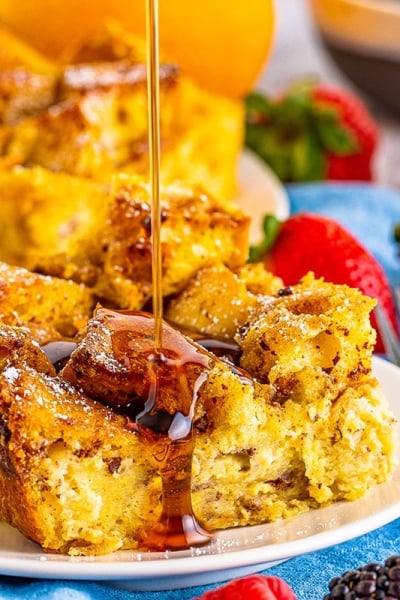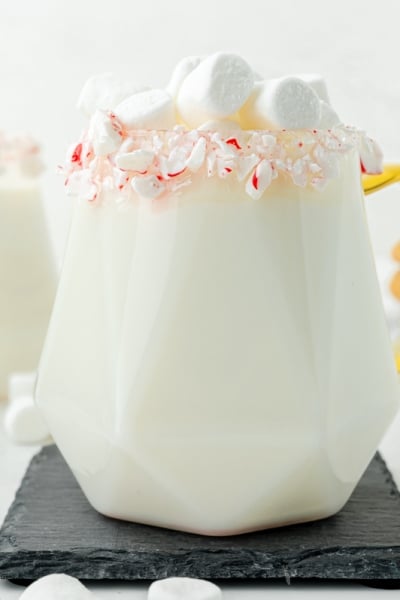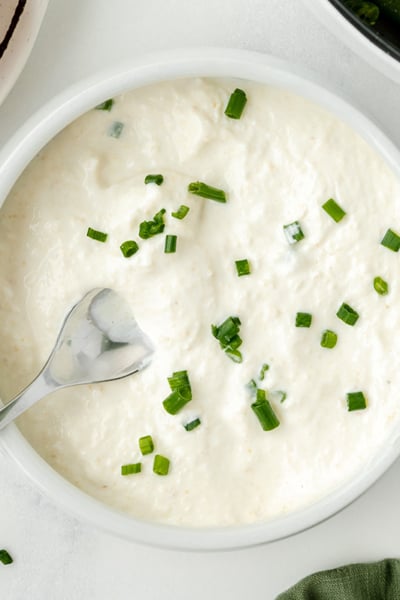Pomegranate (in my humble opinion) is perhaps one of the most exciting fruits out there from a flavor, texture, and visual standpoint. This reddish, purplish, brownish-colored fruit is round in shape and similar to the size of a navel orange. They are native to the Middle East, the Mediterranean, as well as Asia.
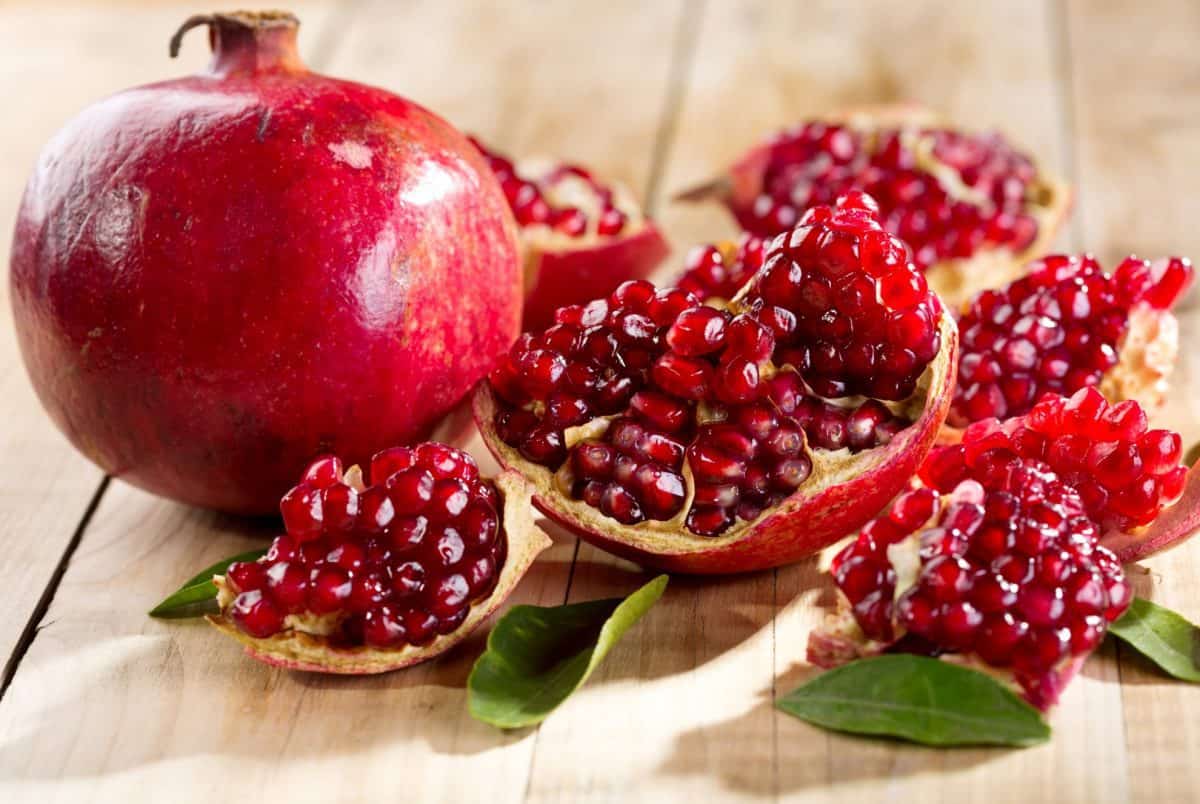
What is Pomegranate?
These lovely gems are a winter fruit and some find it hard to know when they are ripe. The dead giveaway here is the skin. When they are ready to be eaten, the skin will be hard, bright, and most importantly, shiny.
When you cut into a pomegranate you, you will see white fleshy bits know as the mesocarp which surrounds clusters of the seeds or flesh. These individual seeds are surrounded by a covering known as an aril.
The aril is roughly the size of a small kernel of corn and is made up of a skin that is holding juice around the seed. The whole package is edible. The skin and the mesocarp, however, is not.
Fun fact: Pomegranates are the only fruit where the seed is the only edible part of the fruit. Each aril is both sweet and tart playing together. They pack a big bright crunch with each bite. If ripe, they look like little gems and are deep fuchsia and red in color. Both the seeds and the juice from the seeds are used in cooking.
How Do I Eat Pomegranate?
Like so many other fruits, there a few tricks to eating a pomegranate. If you are like my sister, you will cut one in half and sit there eating it aril by aril. It isn’t the most productive way of eating one and the seeds will stain your fingers purple much like beet juice would.
This is also true of your clothing. Consider yourself warned.
Here is the best way to get the job done in my opinion:
- Score the pomegranate along the mid-line being careful not to cut too deep.
- Twist the two halves apart like you do when you are opening an avocado.
- Working one half at a time, gently start to spread the white part away just a bit using your thumbs. You are nudging things open here versus pulling things apart.
- Grab a bowl. Flip one half in your hand so the seeds are facing your palm and with a wooden spoon begin to tap the back (skin side) of the pomegranate. The seeds should start falling away in the bowl.
- Turn often as it will help encourage the seeds out of the fruit. As you get to the last of the seeds, you may need to help them out with your fingers.
- When all the seeds are out, discard the shell of the fruit and any white bits that may have fallen out along the way into the bowl.
- Repeat on the other half.
- Rinse the seeds in cold water if there are still any white bits clinging to them.
- Enjoy!
These can be enjoyed as is as a quick little snack, on top of yogurt in the morning, on a salad, and so much more.
How Do I Cook With Pomegranate?
Pomegranate is most often used as a fresh ingredient. The seeds are an incredible garnish, but from time to time you will see the juice of the seeds in a marinade or pomegranate molasses (a product made from the seeds) used in a sauce or a dressing, etc.
The fruit can also be cooked down to make a jam.
Recipes that Use Pomegranate:
Health Benefits of Pomegranate
There have been quite a few unsubstantiated claims around the health benefits for pomegranates over the years, so I will stick to what is absolute, 100%, without a doubt true.
These babies are packed with loads of vitamins C & K. They are great sources of antioxidants, fiber, and minerals like potassium, calcium, and iron.
What Can I Substitute for Pomegranate?
If you are hoping to use the arils, dried cherries, cranberries, or barberries will give you that sweet, tart one-two punch you are looking for. Sadly, there isn’t anything that rivals that bright burst of juice when you bite into an aril.
If the recipe is asking for the juice of the pomegranate, cranberry juice is going to be the next best thing. In a huge pinch, try lemon or lime juice. It won’t give you the same aromatic intrigue, but it will still give you a great dish.
Also check out:
